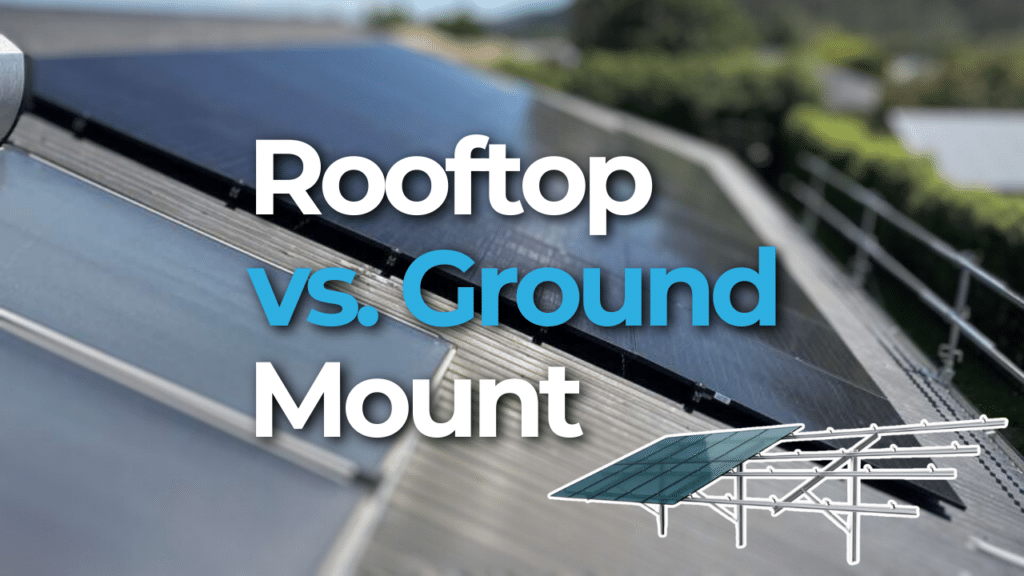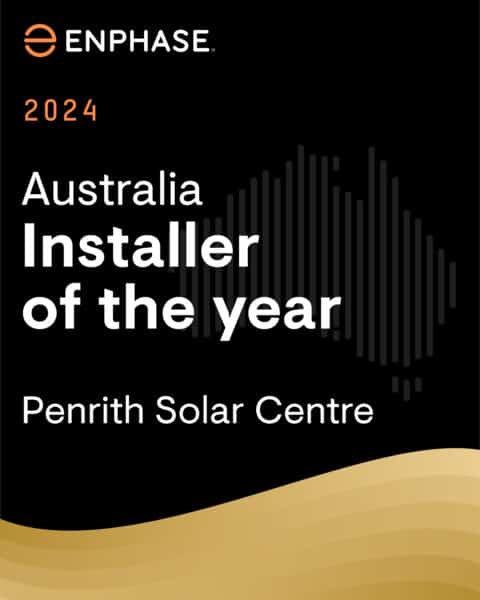
Choosing the right solar installation method is just as important as choosing the right panels. The two primary options are rooftop solar and ground mount solar. But which should you choose?
Each has unique benefits and drawbacks, and your decision will depend on your property, budget, and energy goals.
At PSC, we have led the residential rooftop solar space for nearly a decade. While rooftop solar is the best choice for most homes, there are cases where ground mount solar makes sense.
In this article, you’ll learn about the following:
- What is Rooftop Solar?
- What is Ground Mount Solar?
- Comparing Rooftop and Ground Mount Solar
- When Does Ground Mount Solar Make Sense?
By the end of this article, you’ll know about ground mount installations and which system is right for your home.
What is Rooftop Solar?
Rooftop solar is the most common type of residential solar installation. It’s what you think of when you think of solar systems.
Panels are mounted directly onto the roof using mounting systems. These systems secure the panels in place while allowing for optimal sun exposure. They’re tilted for maximum exposure, usually flush with a roof face.
Most homeowners choose rooftop solar because it maximises unused space. Instead of taking up valuable land, the panels sit on your existing roof structure. This makes rooftop solar cost-effective and easy to integrate into most homes.
If you’re interested in learning a bit more about solar payback periods, you might want to check out the following article titled, What is the Payback Period for Solar Panels in Australia?
What is Ground Mount Solar?
Ground mount solar systems install solar panels on mounting systems set into the ground. These structures can be fixed tilt (stationary at a set angle) or tracking systems (which follow the sun throughout the day).
Fixed tilt systems are more reliable while tracking systems offer slight efficiency improvements but come with higher costs and maintenance issues. They also often break down.
Unlike rooftop solar, ground mount systems require dedicated land space. If you have extra property and want flexibility in panel placement, ground mount solar could be a viable option.
If you’re interested in learning a bit more about weighing the cost of solar against the cost of the grid, you might want to check out the following article titled, Cost of Solar Panels vs. Cost of Energy from the Grid.
Ready to go solar? Click here.
Comparing Rooftop and Ground Mount Solar
Cost Comparison
Cost is a major factor when choosing between rooftop and ground mount solar. Rooftop solar is significantly cheaper because the roof provides a natural mounting structure.
In contrast, ground mount solar requires additional labour, materials, and engineering.
- Rooftop solar: Can cost around $1.00 per watt in some cases.
- Ground mount solar: Costs at least $2.00 per watt, sometimes more.
The difference in cost comes from extra labour and materials needed for ground-mounted systems. Unlike rooftop installations, ground mount solar requires soil testing, post installations, and extensive trenching to run electrical cables underground.
Additional costs include engineering fees, site preparation, and potential landscaping restoration after trenching. These factors can increase total installation costs by several thousand dollars. This extends the payback period for the system.
At PSC, we’ve encountered homeowners who initially chose ground mount solar without realising the total cost impact. Some had to rethink their decision after receiving quotes for excavation and reinforcement. Planning for these additional expenses is crucial when considering a ground mount system.
Efficiency and Performance
Both systems produce the same amount of energy under ideal conditions. However, there are key differences in real-world performance.
Ground mount solar allows for better panel orientation and angling, making it an option for homes with shaded or unsuitable roofs.
Rooftop solar can improve home efficiency beyond just generating electricity. By shading the roof, panels help reduce indoor temperatures in summer. This lowers cooling costs, an often-overlooked benefit of rooftop solar.
Installation and Permitting Considerations
Installation complexity differs between the two systems.
Rooftop solar is simpler and faster to install. In most NSW postcodes, rooftop solar does not require council approval. Panels can be installed in a single day with minimal disruption.
Ground mount solar requires engineering approvals, council permits, and site-specific testing. This adds time and cost to the project. The process includes:
- Conducting a geo test to assess soil stability.
- Excavating and installing steel or concrete posts.
- Running electrical conduit underground to connect the panels to the home.
Ground mount solar also has a significant downside: it disrupts your property. Trenching can tear up landscaping, gardens, and lawns. Homeowners must factor in the additional costs of restoring their yard after installation.
Durability and Maintenance
Both systems are durable and come with long warranties, but maintenance differs.
- Rooftop solar is harder to access for cleaning and repairs, but it requires less ongoing maintenance.
- Ground mount solar is easier to access for maintenance, but it requires regular landscaping. Grass and weeds growing underneath the panels can shade and damage the system, reducing efficiency.
At Penrith Solar Centre, we’ve seen cases where ground-mounted systems became overgrown with vegetation, reducing efficiency. Some homeowners manage this with gravel, concrete, or livestock grazing under the panels, but these solutions add additional costs and considerations.
Aesthetic and Space Considerations
Aesthetics and space usage are important when deciding between the two options.
- Rooftop solar is more discreet. The panels blend into the structure and are not at eye level.
- Ground mount solar is more visible and intrusive. Panels are installed at eye height, which may impact the view from your home or your neighbour’s property.
Unless you have unused land that you don’t mind dedicating to solar, rooftop installations are generally less intrusive and more aesthetically pleasing.
If you’re interested in learning a bit more about how microinverters compare to string inverters from a cost point of view, you might want to check out the following article titled, Cost of Microinverters vs. Cost of String Systems.
When Does Ground Mount Solar Make Sense?
While rooftop solar is the best choice for most homeowners, there are situations where ground mount solar is a better option.
Your roof is heavily shaded – If trees or structures block sunlight from hitting your roof, ground mount solar may offer better energy production.
Your roof is in poor condition – If your roof is old or not structurally sound, a ground mount system avoids the need for roof upgrades.
You want a solar carport or structure – Ground mount systems can be integrated into carports, awnings, or livestock shelters.
You have plenty of unused land – If you have open space and no aesthetic concerns, ground mount solar could be a good fit.
If you’re interested in learning a bit more about the benefits of microinverters, you might want to check out the following article titled, What Are the Benefits of an Enphase Microinverter Solar System?
Power up your savings. Click here.
Final Verdict: Which One is Right for You?
Rooftop solar is the best choice for most homeowners because it is cheaper, easier to install, and just as effective.
Ground mount solar is worth considering if your roof is unsuitable or you have extra land to dedicate to solar.
At PSC, we offer both rooftop and ground mount solar solutions. Our experience in the industry has shown that while rooftop solar is the best fit for most homes, ground mount solar can be a wonderful alternative in specific cases.

If you’re interested in learning about the rebate for solar, you might want to check out the following article titled, Understanding the Federal Government Solar Rebate in Australia: The STC Scheme in 2024










